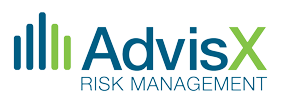
There are words, and then there are words. One of those words is proactive. While overused, the word has connotations that shouldn’t be dismissed—especially in the world of compliance. Last year, the FRB, in their 3rd Quarter Compliance Outlook (https://consumercomplianceoutlook.org/2020/third-issue/the-benefits-of-a-proactive-compliance-program) focused on the concept of proactive and discussed the FRAM automotive oil filter brand and their well-known slogan, “pay me now or pay me later.” The application of analogy to compliance resonates because every institution faces risk that must be identified and managed. Failure to properly identify the risk is clearly like driving in heavy fog. If you want to go fast in the fog you’re unlikely to have a successful outcome. The FRB logically focused on sound responsive programs that include proper risk identification among other efforts. With that identification of risk, organizations can tailor their programs to respond to that risk.
In the world of regulatory compliance there are many areas where a proactive program yields sound results, but one in particular in today’s world is fair lending. Fair Lending encompasses a number of laws and regulations depending on an organization’s risk factors and can generally include the Equal Credit Opportunity Act (“ECOA”), the Fair Credit Reporting Act (“FCRA”), the Home Mortgage Disclosure Act (“HMDA”), the Community Reinvestment Act (“CRA”), and Unfair, Deceptive or Abusive Acts or Practices (“UDAAP”). Powerful changes to these regulations over the past five years have enhanced the ability to conduct insights into performance. For example, the overhaul of data collection for HMDA allows for comparative regression analysis that can enable new insights into an organization’s loan application and lending practices. In another example, the proposed changes to CRA focus on efforts to increase lending to low- and moderate-income (“LMI”) individuals. These and other efforts have placed fair lending at or near the top of the regulatory cross-hairs and merit the word proactive.
Fair Lending Risk Assessment
When taking about being proactive in fair lending, where does an organization begin? The logical place is clearly a sound risk assessment that mirrors the regulatory approach. The basis for this effort would logically look to The Interagency Fair Lending Examination Guidelines (https://www.ffiec.gov/PDF/fairlend.pdf). This central document for all aspects of fair lending includes a pattern for conducting a fair lending risk assessment. The examination guidelines note key elements that will be used as the basis for establishing risk. We recommend use of these guidelines:
- The types and terms of credit products offered, differentiating among broad categories of credit such as residential, consumer, or commercial, as well as product variations within such categories (fixed vs. variable, etc.)
- Whether the institution has a special purpose credit program, or other program that is specifically designed to assist certain underserved populations
- The volume of, or growth in, lending for each of the credit products offered
- The demographics (i.e., race, national origin, etc.) of the credit markets in which the institution is doing business
- The institution’s organization of its credit decision-making process, including identification of the delegation of separate lending authorities and the extent to which discretion in pricing or setting credit terms and conditions is delegated to various levels of managers, employees or independent brokers or dealers
- The institution’s loan officer or broker compensation program
- The types of relevant documentation/data that are available for various loan products and what is the relative quantity, quality and accessibility of such information, i.e., for which loan product(s) the information available will be most likely to support a sound and reliable fair lending analysis
From there the process of evaluation should focus on a number of key aspects that include the following:
- Underwriting guidelines, policies, and standards
- Descriptions of credit scoring systems, including a list of factors scored, cutoff scores, extent of validation, and any guidance for handling overrides and exceptions
- Applicable pricing policies, risk-based pricing models, and guidance for exercising discretion over loan terms and conditions
- Descriptions of any compensation system, including whether compensation is related to loan p
- roduction or pricing
- The institution’s formal and informal relationships with any finance companies, subprime mortgage or consumer lending entities, or similar institutions
- Loan application forms
- Home Mortgage Disclosure Act – Loan Application Register (HMDA-LAR) or loan registers and lists of declined applications
- Description(s) of databases maintained for loan product(s) to be reviewed
- Records detailing policy exceptions or overrides, exception reporting and monitoring processes
- Copies of any consumer complaints alleging discrimination and related loan files
- Compliance program materials (particularly fair lending policies), training manuals, organization charts, as well as record keeping, monitoring protocols, and internal controls
- Copies of any available marketing materials or descriptions of current or previous marketing plans or programs or pre-screened solicitations
From this point, the institution can review its past efforts regarding fair lending and whether any of the following risk factors are evidenced:
- Overall institution compliance record is weak
- Prohibited basis monitoring information required by applicable laws and regulations is nonexistent or incomplete
- Data and/or recordkeeping problems compromised reliability of previous examination reviews
- Fair lending problems were previously found in one or more institution products or in institution subsidiaries
- The size, scope, and quality of the compliance management program, including senior management’s involvement, designation of a compliance officer, and staffing is materially inferior to programs customarily found in institutions of similar size, market demographics and credit complexity
- The institution has not updated compliance policies and procedures to reflect changes in law or in agency guidance
- Fair lending training is nonexistent or weak
Statistical Analysis
These aspects should be logically presented and serve as the basis for data analytics. The use of data analytics is typically dependent on a number of logical factors. For example, the ability to conduct meaningful data analytics requires volume. The focus of most fair lending examinations includes this caveat and it makes sense for an organization to perform statistical analysis where the data supports the process. While there are no hard minimums when it comes to fair lending analytics, the greater the volume of entries the stronger the analysis. However, organizations would be well-advised to recognize that a lack of entries for analysis doesn’t prevent risk. For example, concepts under CRA would promote the need for volume in LMI areas when there is volume in middle and upper-income areas.
Sound statistical analysis for fair lending has typically required expensive systems, but AdvisX believes that analysis can be affordable and expedited. Moreover, the ability to present the data in a meaningful manner that includes mapping has never been more affordable. Statistical and/or Regression analysis can be internally driven or include comparative analysis on select product segments such as that provided under HMDA and/or CRA. When properly conducted, the statistical analysis provides a sound foundation for additional analysis as deemed necessary. For example, analysis that identifies potential risk factors can be further reviewed by conducting additional comparative file analysis. This exercise is described in detail in the Interagency Fair Lending Guidelines and the process serves as perhaps the most insightful effort. When guided by statistical analysis, comparative file reviews provide another strong element for ensuring that organizations avoid the “pay me later.”





